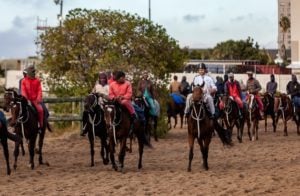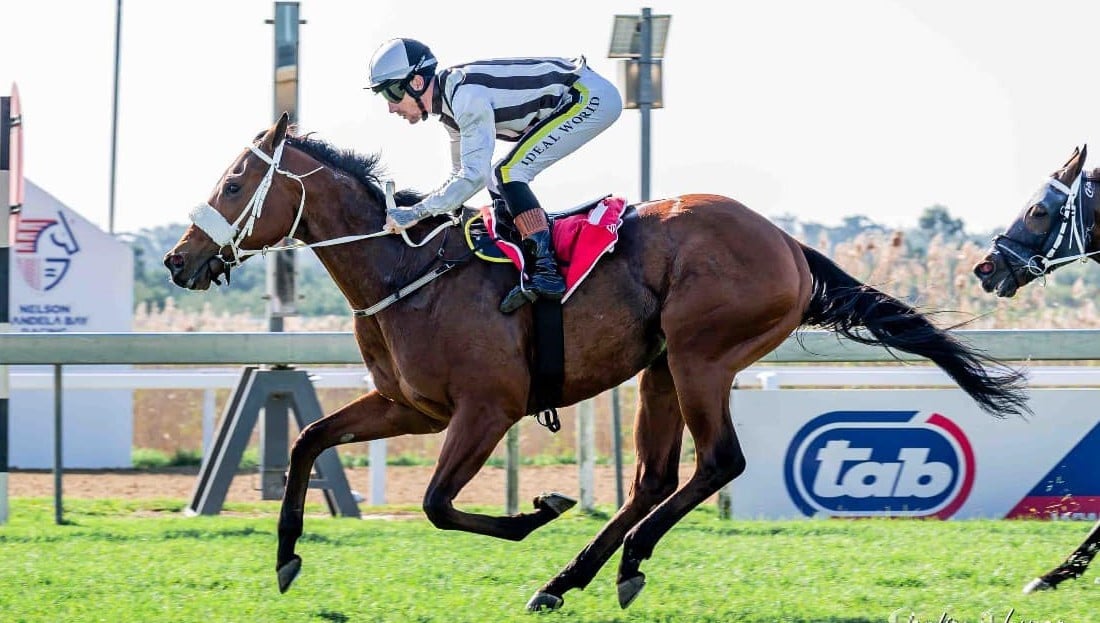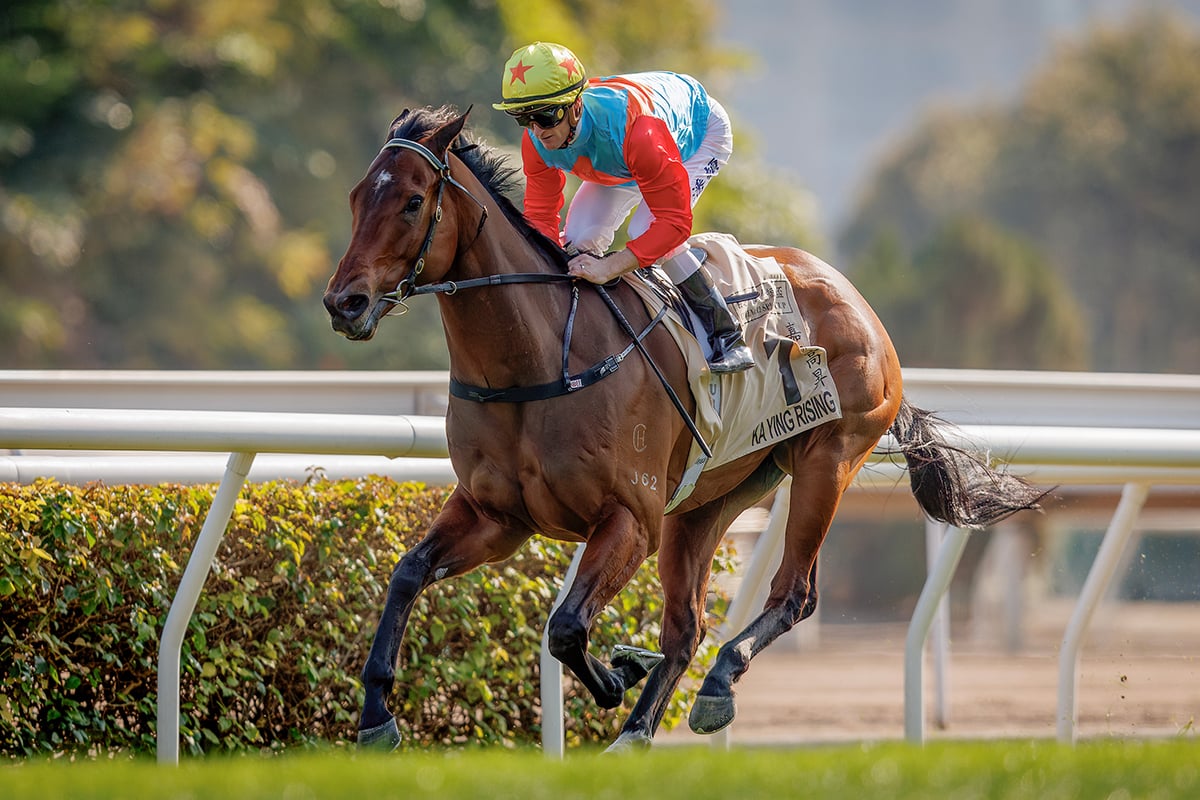It’s been a long time ambition of mine to steal a racehorse. Not to keep, mind you – I have too many horses as it is – but rather to prove the point that the Cape facilities – and Philippi in particular – are a woeful security risk.
I’d obviously do it properly and get a qualified person to ensure that the horse was safe throughout before returning it a day or so later. Just for a laugh, just to see if I could. Unfortunately, my plans aren’t terribly clever or elaborate, because they don’t need to be. Sadly, it seems that just about anyone can walk into Milnerton or Philippi training centre and walk off with a horse and no-one would be any the wiser. As a spate of recent events have proved, it seems that’s sometimes exactly what happens. Allow me to demonstrate.
In-security
A little over 2 years ago, a horse supposedly escaped from Milnerton one sleepy Saturday afternoon. The horse ended up on Koeberg Road, collided with a number of cars and damaged itself badly. In short, it was a mess – several members of the public were subjected to the sight of a distressed horse smashing itself up in passing traffic and frankly, things ended a lot worse for the horse.
Upon making inquiries, I was informed that the horse had somehow escaped from its stable, crashed clean through the metal gate at the loading ramp, run a short distance up the road before crashing into a vibrecrete wall, careered across the small service road, hopped over the traffic island and then tried to hightail it down Koeberg Road. Now I’ll concede that while the scenario sounds highly improbable, it may well have played out as suggested, but if so, what measures have been taken to ensure that the situation does not repeat itself? Other than shaking our heads, tutting sorrowfully and marvelling at the unpredictability of horses, the damage was repaired in double quick time and that seems to have been the end of it.
Another incident saw a case of mistaken identity when a Hodgson inmate accidentally made it to the track instead of one of its friends and actually ran a race. While the poor horse identifier got into terrible trouble (and to be fair, rightly so), how was it possible that the wrong horse managed to leave its stable, nevermind the training yard, in the first place?
While both those instances are about horses getting out, what about someone with ill intent trying to get in a-la Pas de Quoi? It was not that long ago that Harold Crawford was repeatedly menaced at his Milnerton barn and the incident passed with barely a murmur, with the implication seeming to be that he had rather brought it on himself by insisting on paying his grooms’ wages in cash.
More recently, an individual got into the Philippi training centre (not something that is difficult to do) and merrily wandered about opening boxes and setting horses free.
Surely prevention is better than cure and we should be taking measures to avoid this sort of thing happening in the first place. It seems that we dismiss these incidents as a ‘one off’ and then just let them go. Even a single incident should be enough to highlight a gap in the system. Quite why we need an epidemic of anything before action is finally taken is beyond me.
Assumption is the mother of….
As the old saying goes, one cannot manage what you cannot measure, and it’s perhaps at the ‘measuring’ stage that we are lacking. Following up a recent lead about some horses that may or may not have vanished from a Cape training centre, I assumed it would be an easy matter of ringing the relevant authorities and getting them to check the records for discrepancies in horses coming in vs horses that were actually present in any given barn. As it turns out, I really should stop assuming anything when it comes to racing.
Keeping track
It seems our record keeping is a bit, well, lax and run on something of an honesty box system with the responsibility falling to trainers to log any movement of horses. Other than the vague arrangement of a form that should be lodged for horses that are deceased or have changed stables, there is no independent checking system to ensure that the horses that are supposed to be in any given box are in fact where they are supposed to be.
There are owners out there who will attest to the experience of thinking their horse is in one location, only to find out – usually some time after the event – that their horse has been relocated (generally when the transport bill arrives!). The current system allows the trainer a week in which to lodge the relevant form, so in fact, a horse may well have been gone for several days before any official notification is due. It has happened. There does not even seem to be a particularly good system of monitoring horses that die during training (a morbid subject I know, but a fairly important one, given the recent spate of drug positives doing the rounds). Looking at the subject in reverse, there are cases of owners being told that horses have died, only to find the horse looking very lively and competing at a local show a few months later. True story.
Horses, horses everywhere
Horses come into and out of training centres all the time. Aside from the horses that are there in full training, there are horses being broken in, horses being prepped for Ready To Run Sales, horses waiting to be sold off after being retired from racing, or even just plain old lead ponies of which there are several. Horses come and go to the races, to the vet, to spelling farms, etc on a daily basis.
Added to that traffic are all the vets, farriers, feed / bedding merchants, physical therapists, dentists, salesmen, horse whisperers, photographers or even passing journalists – does anyone actually know what (or in fact who) is and isn’t in any of our training centres at any given time? I’m betting the answer is no. And yet, there are ‘directives’ that trainers should produce a prescribed number of runners to boxes!
Security Measures
I’m not trying to get anyone in trouble – the security folk are doing the best they can, but the bottom line is that no matter how sweet and kind they are, it’s the facilities and infrastructure that are lacking. From memory, we have somewhere in excess of 800 horses in Milnerton and around 600 at Philippi. I’m fairly keen on horses and can tell a fair few of them apart, but keeping track of numbers like that would be a stretch even for me. So what measures do we have in place to register and track these horses coming and going?
The answer seems to be ‘not very many.’ There are a number of reasons for this – the top of the list being resources (that old ‘chestnut’ – see what I did there?). However, even if we want to blame the ‘old regime’, Phumelela have been in the driving seat for a number of years now and we have yet to see any material change where it matters most – for our horses.
Don’t blame the security staff – they (currently) have no way of checking whether any given horse transport vehicle has official business on their premises or even that the vehicle is arriving / leaving with the correct animal, which opens the door to yet another possible scenario.
In or out?
Nevermind stealing a horse, what about adding a horse that should not be there – it’s not unheard of for transporters to deliver a horse to an incorrect location and some horses don’t find their way to their intended destination for days. While the operators have preferred transporters for getting horses to and from gallops and races, there is no system of licensing transport companies. As most transporters operate big vehicles, they are generally disinclined to do the little emergency jobs that are so often filled by private individuals and there are a myriad of private individuals in and out of our training centres on a daily basis and no-one checks who the horses are that are coming or going.
If we were to take that to an extreme, what’s to stop someone from driving an AHS (or any other communicably diseased) animal into the midst of a training facility – or even the race course – and driving off? It happened in Kimberley not so long ago that a horse was allowed to get onto a float, travel to the track and actually race without a passport – in other words, without checking that it had received its relevant inoculations. I happen to think that this is not only irresponsible, but downright dangerous.
Bucking up our ideas
It’s not good enough folks! If we want to be grownups and play in the international league, then we are going to need to start doing some housekeeping. That there should be a proper list of all the horses in each barn of each training centre at any given time. Each horse should be verified and checked in and checked out by a responsible person. In fact, each person should be checked in and out of the facilities. This simply isn’t done well enough – while you will (mostly) be asked to fill in a log book on entering a facility, you can happily sign in as M Mouse or D Duck and you will be waived through as courteously as if you were the Queen of Sheba.
Stringent checks and balances are an awful lot of work – and probably more trouble than a lot of horses are deemed to be worth – but it is worth considering what some of our horses are actually worth these days. As a sobering example, the Mike Bass yard houses Zud Wes, who was a R3 million sales yearling. Another client recently bought the CTS R5 million sales topper and presumably that colt will also make its way to the same barn in the not too distant future. Imagine the implications of making off with those two horses alone? You could (literally) conveniently fit R8 million into a garden variety 2 berth horsebox and drive off into the blue yonder. Mind-boggling.
Facilities
The tracks are an on-going saga, so I won’t even start on that one, but while I’m on my hobby horse, I may as well raise the issue of starting stalls. The Philippi lot are so poor that the tyres are completely vrot and the gates are in such a state of disrepair that they sometimes need manual assistance when passing horses through the pens! And this is not just a Cape problem either – it was not that long ago that a Gauteng horse went clean through the ramp of its transport vehicle en route to the races.
While new RA rooms, It’s A Rush campaigns and fancy Brand Ambassadors are all good and well, there is something wonderfully illogical about spending millions on travelling horses across the country to fancy, air-conditioned sales venues, only to consign them to ill-equipped training centres. It’s not just a disgrace, it’s a downright embarrassment.
Perhaps while we are celebrating the forthcoming Cape Summer Of Champions, I might suggest that as food for thought at the next hospitality soiree instead of the latest canapé menu.











